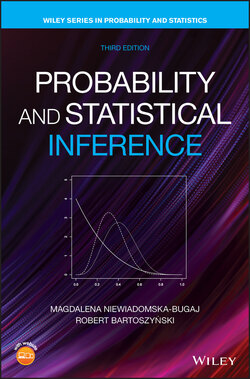Читать книгу Probability and Statistical Inference - Robert Bartoszynski - Страница 55
2.4 Consequences of the Axioms
ОглавлениеThe simplest consequences of the axioms of probability are as follows:
1 The probability of the impossible event is zero:(2.1) This follows from the fact which is possible only if . It is important to realize that the converse is not true: the condition does not imply that . This is shown by the following example:Example 2.4Consider an experiment consisting of tossing a coin infinitely many times. The outcomes may be represented as infinite sequences of the form HHTHTTHT …so that the sample space contains infinitely many of such sequences. The event “heads only,” that is, the set consisting of just one sequence HHHH …, is not empty. However, the chance of such an outcome is, at least intuitively, zero: tails should come up sooner or later.
2 Probability is finitely additive:for any if the events are pairwise disjoint.In an infinite sequence events are pairwise disjoint only if are, so Axiom 3 applies. Therefore, using (2.1), we havewhile the left‐hand side is
3 Monotonicity: If then . This follows from the fact that . The events on the right‐hand side are disjoint, so we have by Axiom 1. Since for every event , we have
4 Probability is countably subadditive:(2.2) for every sequence of events This follows from representation (1.6) as a union of disjoint events, and then from monotonicity. We have
5 Complementation:(2.3) This follows from Axiom 2, by the fact that and are disjoint and .
6 Probability of a union of events:(2.4) Indeed, since , then . On the other hand, , and hence, . Solving for in one equation and substituting into the other, we obtain (2.4).
Figure 2.6 Union of two events.
A more intuitive argument may be made by using Venn diagrams (see Figure 2.6). In the sum , each sample point from the intersection is included twice, so to obtain the probability of the union we must subtract the probability .
